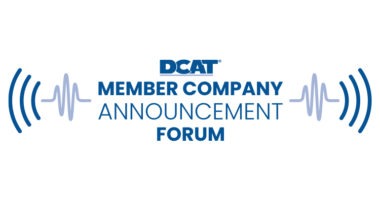Parenteral Drugs and Healthcare Reform
What do parenteral drugs and healthcare reform have in common? Recent reports point to the relationship between the high cost of specialty drugs, often parenteral drugs administered in hospitals. So what did the reports show and what are the implications?
A recent study in the New England Journal of Medicine outlines issues to improve the 340B Drug Discount Program, a US government program created in 1992 that requires drug manufacturers to provide outpatient drugs to eligible healthcare organizations and covered entities at reduced prices. The study points out that the program has grown substantially since eligibility was expanded in 2003 and may be one factor contributing to higher prescription drug prices.
Inside the 340B Drug Discount Program
Reform to the 340B Drug Discount Program has come from many sides. In January 2018, the US House of Representatives’ House Energy & Commerce (E&C) Committe released a report to offer recommendations to improve the 340B Drug Discount Program. 340B refers to a section of the Public Health Service Act, which specifies which covered entities are eligible to participate in the 340B Drug Program. These include qualifying hospitals, federal grantees from the Health Resources and Services Administration (HRSA), the US Centers for Disease Control and Prevention, the US Department of Health and Human Services’ Office of Population Affairs, and the Indian Health Service.
The report followed an October 2017 E&C Committee hearing in which five covered entities rejected an earlier proposal that the 340B Program should be narrowed or eliminated. The proposal was a result of a subcommittee hearing held in July 2017 in which government witnesses were unable to answer many questions about how covered entities use the 340B Program due to the lack of reporting requirements in the statute, and the report highlighted several recommendations to improve oversight and implementation of the program.
In December 2017, the Pharmaceutical Research and Manufacturers of America (PhRMA) issued a statement to support proposed legislation designed to improve oversight of the 340B Program. The proposed legislation, Protecting Access for the Underserved and Safety-Net Entities Act (340B PAUSE Act) (H.R. 4710) was introduced in the House by Congressmen Larry Bucshon (R-Indiana) and Scott Peters (D-California) in December 2017. The 340B PAUSE Act temporarily pauses new enrollment of Disproportionate Share Hospitals into the 340B Discount Drug Program and requires basic data reporting, similar to the data reporting required of other 340B participants. Disproportionate Share Hospitals serve a significantly disproportionate number of low-income patients and receive payments from the US Centers for Medicaid and Medicare Services to cover the costs of providing care to uninsured patients, according to information from the HSRA, an agency of the US Department of Health and Human Services.
“Voice after voice has stressed how the program has strayed from its original intent of ensuring needy patients have access to affordable medicines, instead driving distortions in the healthcare marketplace that are increasing patient costs,” said Stephen J. Ubl, president and chief executive officer of PhRMA in a December 21, 2017 statement. “We encourage Congress and the Administration to continue to build on the momentum and support passage and eventual implementation of this legislation. By imposing a temporary moratorium on the enrollment of new DSH [Disproportionate Share Hospitals] hospitals participating in the program, the bill helps to stem the long-time abuse of the 340B program by some of the nation’s wealthiest hospitals while ensuring that rural hospitals and grantees can continue to use the program to help patients. At the same time, the bill puts reporting requirements in place to prevent future abuses and increase HRSA’s oversight of the program.”
The 340B Program and impact on parenteral drugs
One of the consequences of the 340B Program, according to a recent article in The New England Journal of Medicine is the 340B Program has been associated with hospital–physician consolidation in hematology–oncology and with more hospital-based administration of parenteral drugs in hematology–oncology and ophthalmology (1). An analysis of the study by the American Pharmacists’ Association explained that the data from the study showed that hospitals in the 340B Program experienced hospital–physician consolidation in hematology-oncology and administered more parenteral drugs in both the hematology-oncology and ophthalmology settings. The analysis showed that although the 340B Program offers discounts, it may encourage provider consolidation, which has increased prices and spending. The study authors assert that a recent move by HHS to reduce drug reimbursements to 340 B affiliates could curb hospital–physician consolidation without deteriorating care for low-income patients. Meanwhile, they conclude, policymakers should consider broader proposals that make payments and discounts for care delivery setting-neutral.
A recent analysis by the White House’s Council of Economic Advisors highlights what it perceives as shortcomings to the 340B Drug Discount Program and the related impact on drug pricing. “The 340B Program has expanded dramatically in recent years,” concludes the report. “Safety-net providers and their affiliated sites spent more than $16 billion to purchase 340B drugs in 2016, six times the amount spent in 2005, and the number of hospital organizations participating grew from 583 in 2005 to 2,140 in 2014.” The report points to two key issues. “Two significant problems have emerged in the 340B program. First, the imprecise eligibility criteria has allowed for significant program growth beyond the intended purpose of the program. Second, providers earn significant profits from qualifying for the program, which can be used to fund other forms of care or shareholders’ dividends rather than provide care for low-income patients…..An unintended consequence of the 340B program has been that covered entities receive guaranteed profits while low-income patients who are the purported target of the program may receive little to no benefit. Covered entities can purchase drugs at discounted 340B prices for all their patients and sell them to patients with Medicare and private insurance at far higher prices,” concludes the report. They are not obligated to pass the discount savings onto patients nor are they required to report how they served low-income or vulnerable populations.“
The report offers a solution. “Drug-reimbursement could be restricted under the program to cover only uses the purchased drugs are intended to treat. Such a limitation would constrain the ability of providers to use 340B to cross-subsidize other care the provider may offer or use 340B as a source of profits to provider shareholders.
Regulatory changes that prevent profiting from the 340B Program in Medicare Part B are currently under way, noted the report. Prior to 2018, Medicare Part B paid the same amount for drugs to 340B entities and non-340B entities even though the 340B entities purchase the drugs at a steep discount. Hospitals in the 340B Program accounted for 48% of Medicare Part B spending at acute care hospitals in 2013. It is estimated that 340B hospitals receive, on average, a minimum discount of 22.5% of the average sales price (ASP) while Part B pays ASP plus 6% for outpatient drugs, according to the report. On November 1, 2017, CMS issued the Hospital Outpatient Prospective Payment System (OPPS) and Ambulatory Surgical Center (ASC) Payment System final rule, which starting January 2018, that will reduce the amount Medicare pays hospitals for drugs acquired through the 340B Drug Pricing Program to ASP minus 22.5% rather than the current ASP plus 6%, according to the report. “These reforms will reduce overutilization of the 340B program and thus require hospitals to pay market prices for drugs for ineligible populations,” says the reports. It will also lower Medicare beneficiaries’ coinsurance liability, saving them an estimated $3.2 billion over the next decade.
Reference
1. S. Desai and M. McWilliams, “Consequences of the 340B Drug Pricing Program,” The New England Journal of Medicine, January 24, 2018.






